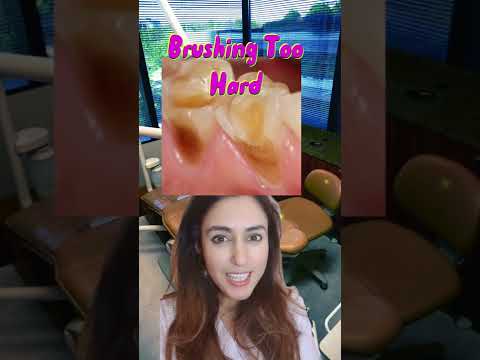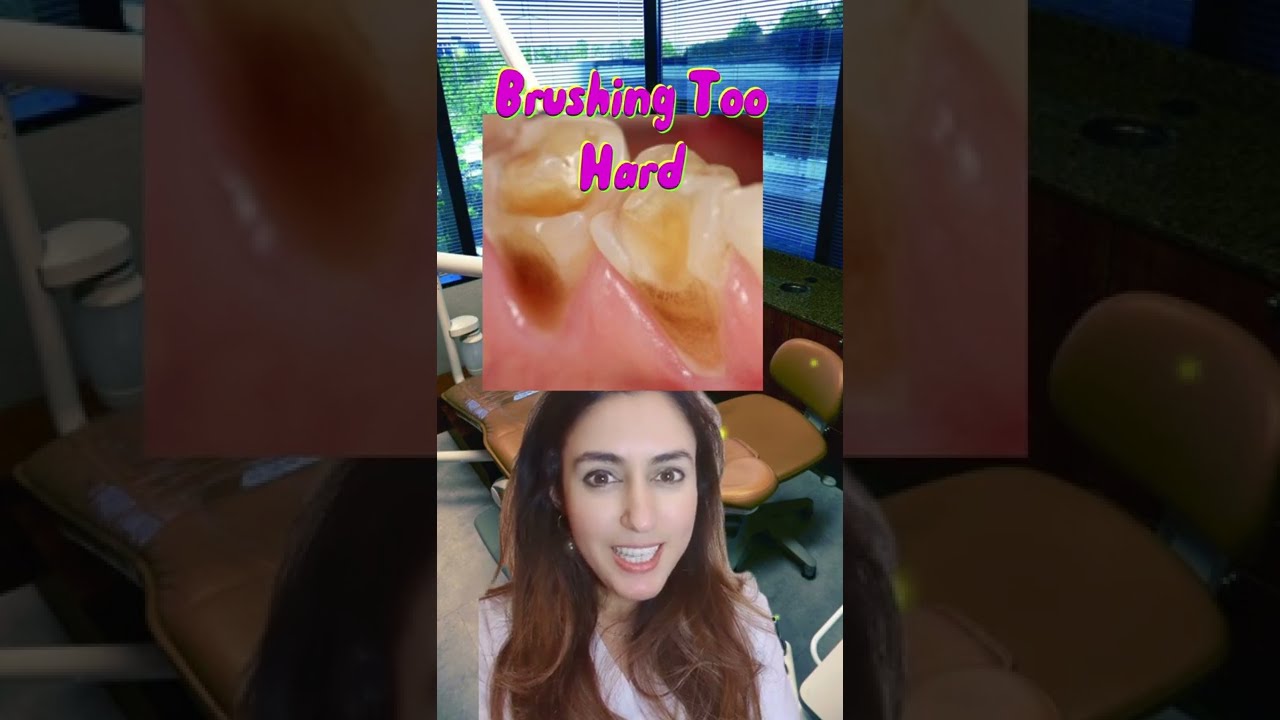Ever wondered why your teeth appear yellow? Yellow teeth can be a result of several factors that accumulate over time. One primary culprit is plaque, a sticky film of bacteria that forms on the teeth. When not properly removed through regular brushing and flossing, plaque can harden into tartar, which not only causes tooth discoloration but also leads to more serious oral health issues. Another common contributor to yellowing teeth is staining from consumption of certain foods and beverages such as coffee, tea, red wine, and dark-colored fruits. These substances contain pigments that can seep into the enamel, gradually discoloring the teeth. Additionally, lifestyle choices such as smoking or tobacco use can leave stubborn stains on teeth, resulting in a yellowish appearance. Poor oral hygiene habits and neglecting regular dental cleanings can also contribute to teeth yellowing. Understanding the causes of yellow teeth can inspire you to take proactive measures to maintain a bright, white smile. Regular dental visits, proper oral hygiene practices, and limiting consumption of staining substances can help prevent and combat teeth discoloration, keeping your smile radiant and healthy.

Factors that Contribute to Teeth Yellowing
| Factor | Description |
|---|---|
| Dietary Habits | Poor dietary choices, such as consuming excessive amounts of coffee, tea, red wine, or highly pigmented foods like berries, can stain the tooth enamel over time. |
| Smoking and Tobacco Use | Tobacco products contain tar and nicotine that can seep into the enamel, leading to yellowing and discoloration. |
| Poor Oral Hygiene | Inadequate brushing and flossing can result in a buildup of plaque and tartar, which often appear as yellowish stains on the teeth. |
| Aging | As we age, the outer layer of enamel naturally wears away, revealing the yellowish dentin layer beneath. |
| Genetics | Some individuals naturally have thicker or more porous enamel, which is more prone to staining and yellowing. |
| Medications | Certain medications, such as tetracycline antibiotics, can cause intrinsic staining, leading to yellow or gray discoloration. |
| Dental Trauma | Severe trauma or injury to the teeth can disrupt enamel formation, resulting in yellow or brown spots on the affected teeth. |
| Fluorosis | Excessive fluoride consumption during tooth development can lead to fluorosis, characterized by yellow or brown stains on the enamel. |
Brighten Your Smile: Unveiling the 3 Culprits Behind Yellow Teeth
What Makes Teeth Yellow: The Science Behind Teeth Discoloration
Yellow teeth are a common dental concern that affects millions of people worldwide. While a bright and white smile is often associated with good oral health and hygiene, many factors can contribute to teeth discoloration. Understanding the causes of yellow teeth is the first step towards finding effective solutions and achieving a whiter, brighter smile.
The Role of Enamel in Teeth Color
Teeth color is primarily determined by the enamel – the outermost layer of the tooth. Enamel is naturally white and translucent, allowing the underlying layer of dentin to show through. However, due to various factors, the enamel can become stained or discolored, resulting in yellow or dull-looking teeth.
When it comes to teeth discoloration, there are two main types: extrinsic and intrinsic stains.
Extrinsic Stains: External Factors that Cause Yellow Teeth
Extrinsic stains refer to discoloration on the outer surface of the teeth. These stains are caused by various external factors, such as:
1. Food and Beverages: Certain foods and drinks, such as coffee, tea, red wine, and dark-colored berries, contain pigment molecules that can cling to the enamel, causing staining over time.
2. Tobacco Use: Smoking or chewing tobacco can lead to severe teeth discoloration. The nicotine and tar present in tobacco products can penetrate the enamel, causing deep yellow or brown stains.
3. Poor Oral Hygiene: Inadequate brushing and flossing can result in a buildup of plaque and tartar on the teeth, which can lead to yellowing. Regular oral hygiene practices help remove surface stains and prevent the accumulation of plaque.
4. Aging: As we age, the enamel naturally wears down, revealing more of the yellowish dentin layer underneath. This natural aging process can contribute to yellowing teeth.
Intrinsic Stains: Internal Factors that Affect Tooth Color
Intrinsic stains occur within the tooth structure itself and are often more challenging to remove. These stains can be caused by:
1. Trauma: A blow to the mouth or any form of dental injury can damage the developing permanent teeth, leading to discoloration. This type of intrinsic stain is often more severe and requires professional intervention.
2. Medications: Certain medications, such as tetracycline antibiotics, antihistamines, and high blood pressure drugs, can cause teeth discoloration when taken during tooth development. Additionally, some chemotherapy drugs may cause yellowing or darkening of the teeth.
3. Fluorosis: Excessive fluoride consumption during tooth development can lead to a condition known as fluorosis. This condition causes white, brown, or yellow spots or streaks on the teeth.
4. Genetic Factors: Some individuals may be genetically predisposed to have naturally darker or yellowish teeth. These genetic factors can influence the thickness and color of the enamel.
Prevention and Treatment Options
Fortunately, there are several preventive measures and treatment options available to combat yellow teeth:
1. Regular Oral Hygiene: Brushing your teeth twice a day, flossing daily, and using mouthwash can help remove surface stains and maintain good oral health.
2. Professional Dental Cleanings: Regular visits to the dentist for professional cleanings can help remove stubborn stains and prevent the accumulation of plaque and tartar.
3. Teeth Whitening: Over-the-counter teeth whitening products and professional teeth whitening treatments can effectively lighten the color of teeth, reducing yellowing and enhancing overall smile aesthetics.
4. Dental Veneers: For severe discoloration or intrinsic stains that do not respond to other treatments, dental veneers can provide a long-lasting solution. Veneers are thin, custom-made shells that cover the front surface of the teeth, improving their color and appearance.
5. Lifestyle Changes: Limiting the consumption of stain-causing foods and beverages, quitting tobacco use, and maintaining a healthy diet can help prevent further teeth discoloration.
The Importance of Professional Advice
If you are concerned about the color of your teeth, it is essential to consult with a dental professional. They can evaluate your oral health, identify the cause of teeth discoloration, and recommend the most suitable treatment options.
Remember, while there are numerous over-the-counter products and DIY remedies available, it is always best to seek professional advice for optimal results and to ensure the long-term health of your teeth.
In conclusion, yellow teeth can be caused by various factors, including extrinsic stains from food, tobacco, and poor oral hygiene, as well as intrinsic stains from trauma, medications, and genetic factors. Preventive measures, regular dental cleanings, teeth whitening, dental veneers, and lifestyle changes can all contribute to achieving a whiter, brighter smile. Consulting with a dental professional is crucial in determining the underlying cause of teeth discoloration and finding the most appropriate treatment option.
Causes of Yellow Teeth:
- 1. Poor Oral Hygiene
- 2. Smoking and Tobacco Use
- 3. Food and Drinks
- 4. Aging
- 5. Medications
- 6. Genetics
- 7. Excessive Fluoride Consumption
- 8. Dental Trauma or Injury

